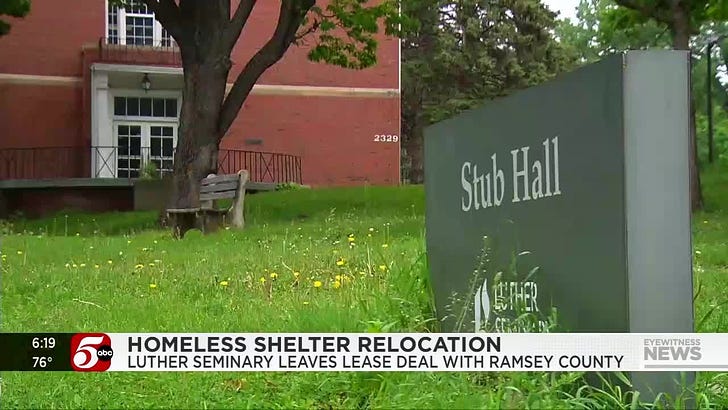
Discover more from Lutheran Confessions
Why, when the church thinks about the future, does it focus on technology? I ask this as someone who has written a book on the subject of “media and faith” with particular reference to new technologies.
Why, I might ask, do I equate the future with a technological future, and focus on new technologies as a renewed hope for a church in transition or decline?
I think the answer is twofold. As I point out in Mediating Faith: Faith Formation For a Transmedia Era, partially it’s simply because we sometimes confused new media and the effect of the transition to new media. That is to say, precisely because it is new it garners more of our attention.
However, the second reason is more dismal: I think the church has largely capitulated to a vision of the future encompassed entirely by the capitalist frame, and so it (mostly) can’t imagine any (hopeful) future other than one that is mediated by new technology.
Take, as a recent prominent example, Try Tank’s new video for the Episcopal Church. If you’ve got ten minutes, you can watch it here. If you don’t have time for the video, the narrator makes three suggestions based on trends for what the future of the church might be. They are:
Distributed church: small micro-churches gathering all over
Authentic do-it-yourself spirituality: basically, an app where you can access all kinds of theology
Blended reality experiences: by which he means Oculus and other VR resources
Now, I don’t want to be too hard on this video or the narrator of it, but if you think about what the church is, you can see where these are all somewhat problematic proposals for the future of the church. I don’t mean that these aren’t trends. They certainly are. But they’re only trends in media and mediation, not a vision for the future of the church.
In the video, the narrator points out that younger generations have looked at the church and found it wanting, and then have organized for social justice in ways that are very aligned with… the church. And he’s right. There’s more of a relationship between the biblical prophets and Christian theology and a humanist progressive vision for the commons than many disconnected from religion may be aware.
And it might be that skillful use of new media might help bridge the divide between a secularizing younger generation and an aging church. I don’t doubt that.
However, if we want to look at trends and project what the future of the church might be in 2032, as the video attempts, we should keep in mind that the vision in the video is very constrained by a) bourgeoise values, and b) capitalism.
I mean, I highly doubt unhoused people (many of whom are Christian) hope for a future church that allows for more greatly mediated experiences through virtual reality devices. I think the future of the church for an unhoused person would be a church that provides housing.
Similarly, although it’s certainly true that small groups have always and will continue to meet with intentionality, I hardly think those micro-communities need to be connected to larger ecclesial institutions, and probably won’t be.
Finally, if church leaders think that if they just create the right app to put great spiritual resources at the finger-tips of new media users, I wonder if they are forgetting this already exists.
The issue isn’t that people don’t have liberation theology or queer theology or eco-feminist theology at their finger-tips. They do. It’s that they don’t know or don’t care or don’t find it necessary to the life they are living. And no app will fix that.
Now, what I’m not saying is that I’m against attempts like TryTank’s. Thinking about the future of the church interests me. I care about the future of the church. And as I’ve already pointed out, I both write about new media and use new media regularly (like this blog, Substack being an example of Web 2.0).
But in spite of Marshall McLuhan’s idea that the medium is the message, the medium is not the content of the message itself. At least I hope all sermons in 2032 won’t be about virtual reality devices or apps. Remember (sorry, brief digression) that when McLuhan’s book came out the printer accidentally gave the book the title The Medium Is the Massage, and McLuhan liked it so much he kept it that way.
McLuhan’s insight into the effects of new media is that media is neither simply the vehicle through which the message is delivered, nor is the medium a replacement for the message, but rather their is an effect, a way in which the medium “massages” the messages, with some media more subtly doing so than others (even to the point where some media become extensions of the human themselves—the written word may be an example).
So if we are going to ask ourselves about the future of the church, I think we would do better to acknowledge that it may very well be the case that virtual reality, or distributed forms of communication, network effects, democratized access to theological and sacramental resources, all may impact how the church in the future functions, it’s also the case that almost all of the new media arising in 2022 is increasingly conformed to a vision for the future captive to the hegemony of capitalism.
The church can’t imagine future church outside of these new media because the church, together with much of the rest of the world, can’t imagine an alternative to capitalism.
I’ve always appreciated Ursula K. LeGuin’s comments at her acceptance speech in 2014 for Distinguished Contribution to American Letters:
“We live in capitalism. Its power seems inescapable. So did the divine right of kings. Any human power can be resisted and changed by human beings. Resistance and change often begin in art, and very often in our art, the art of words.”
Why, we might ask, would the church surrender to capitalism? Why would it allow its vision for the future to be (almost) entirely populated by the capitalist vision? We know, for example, this is why many progressive Christians are so adamantly progressive—we still hold out for an alternative to capitalism. Many of us do so by imagining along the lines of democratic socialism, even if we also recognize that socialism, though closer to the kin-dom of God, is still not the coming kin-dom.
Nevertheless, if I were going to cast a vision for 2032, and invite all the readers of this blog to envision the church of 2032, I’d invite us to at least try to hope for a future not constrained by the straitjacket of the current hegemonic economic system or the perils of nationalism.
If we are looking for trend-lines, I’d rather focus on trends I see happening in the church that carry synergy with the trend-lines of social justice movements the world over. So if you ask me, what are the top three things I envision for the church of 2032 as a progressive pastor, I’d say:
The church overcomes the heresy of national borders and welcomes the stranger, everywhere.
The church resists the modern Caesar, capitalism, and instead of capitulating, begins practicing an alternative economy, one especially focused on creation care.
The church takes its sacraments literally, and so ensures everyone has a glass of clean water, everyone has food, and by analogy, pours itself out for the poor because it discovers God in their midst.
I imagine distributed church, authentic do-it-yourself church, and even blended reality experiences may play a role in the church moving toward that future. But the future I’ve outlined has as its inspiration not a rapacious economic system or the most recent new media innovations, but rather the coming Spirit of God.
Subscribe to Lutheran Confessions
Reflections from a progressive Lutheran pastor in the South.







Sarah I think our congregation is interested in the visual arts and has multiple members who lead us in art projects. This would include our signs, some murals painted in our church, and art we do for seasons and decor. I do find your question fascinating and I think I need to add a chapter to the guidebook on the visual arts from a progressive perspective.
I work in the arts and am on a panel with architects and designers about designing for the future of the church. When I consider this vision of the future of the church, I may be out of a job. Who in the future is going to want sacred art? Yet, the more digital we get the more we crave the real. Do you think that the arts have a future in the church? (Heck, I'm not even sure they have a present in the church. I'm a progressive Lutheran as well and it seems to me that Lutherans are pretty much indifferent to the visual arts. It causes an ache in me, but Lutherans hit things right in other places that matter.)